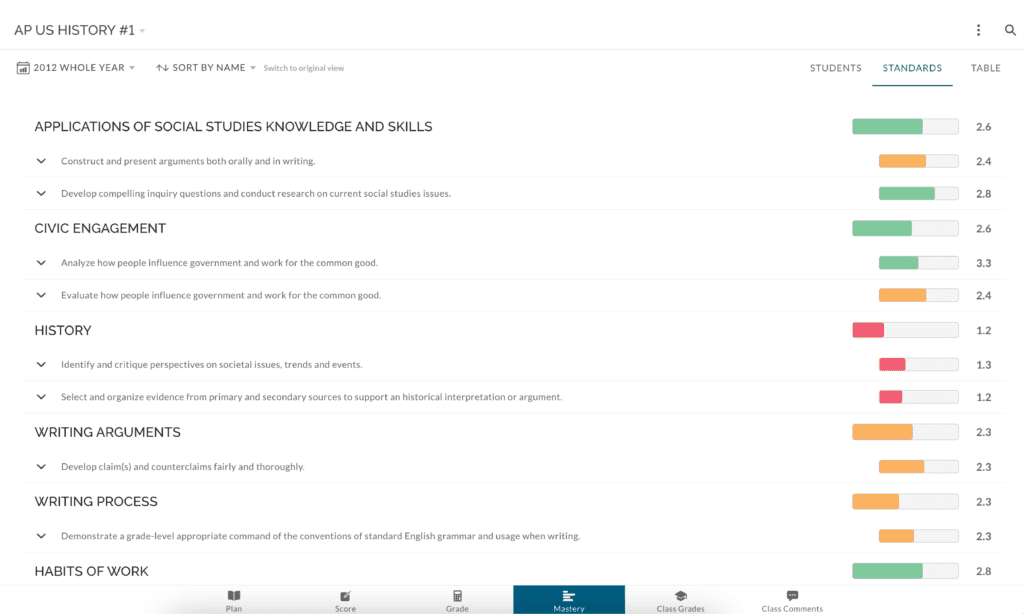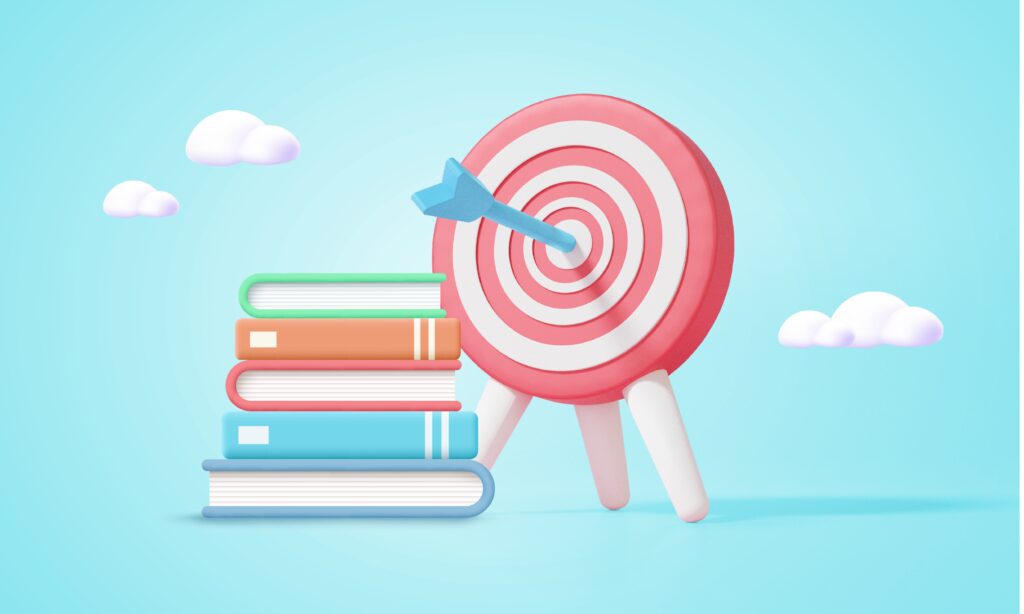Using Data to Guide Instruction and Improve Student Learning
The blog post Using Data to Revise Plans addresses data at several levels, including the classroom level. Teachers collect formative and summative assessment data in their classrooms for many reasons. Those data help us see student progress and achievement, allowing us to differentiate according to students’ needs.
I mentioned a couple of JumpRope features in Practice-Software Tip #7 that support teachers in that process. Looking at student data also helps us consider our own practice: Across our students and our targets, where do we see our successes, and where do we see space to improve?
How does the JumpRope software support you in this process?
One of my favorite features in JumpRope is depicted in the screenshot below. It gives the teacher the ability to sort learning data at various levels. We see whole class data broken down by standard and indicator.

This view enables the teacher to recognize which indicators this class is still working on and which they are more confident with. These data would encourage me to think about things like the amount of time I’d spent on these indicators, the instructional strategies I used to address them, how I grouped students for this learning, and other variables that I can control.
For example, the class of students has been more successful with the standard APPLICATIONS OF SOCIAL STUDIES KNOWLEDGE AND SKILLS than they have been with HISTORY.
Seeing this whole class data would encourage me to:
-
-
- Compare my instruction of the former with the latter
- Engage colleagues on how they teach the latter
- Seek student feedback on how my instruction could be improved
- Request some observational feedback from a colleague or administrator
-

Looking at this kind of data encourages me to think deeply about my role as a teacher. In a standards-based model, the goal is not to sort students according to who has learned best or most and who has learned least but to strive for each learner to meet the expectations.
Meeting that goal is one of the ultimate measures of my practice, and without this kind of data to help me consider my practice, it would be tough to know where I have more work to do. As stated, data like those depicted above help me meet my expectations for myself.
If you’d like to learn more about how JumpRope can help you guide instruction and improve student learning, reach out today for a discussion.

